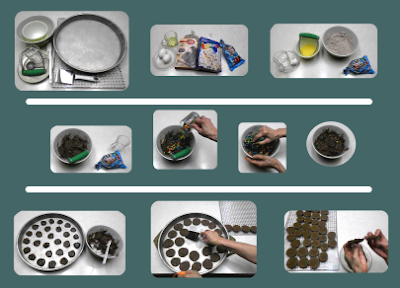For a larger, unreduced image, click here.
Not being an entomologist or gardener who might know about bugs, I wondered how to get information about the shell's former occupant and how it departed. A Google image search yielded seemingly countless, overwhelming results.
I decided to turn to LinkedIn connections, and posted a pic and update, hoping to get someone to identify the item. I was in luck! Two people, John Rothgeb, and Steven Schwartzman, replied with great leadoff info.
From John, a declaration and web link: "Looks like cicadas or even a Giant cicada - http://texasento.net/Cicada.htm". The website images and first .wav file sent me off to Googling more info.
From Steve, a strongly specific term and also two links to blog articles he had written about cicadas himself:
The thing in your picture appears to be the exuviae of a cicada. That word is a Latin plural that entomologists use for the exoskeleton that an insect casts off as it grows from one stage into the next.A third LinkedIn connection declared the shell to be cicada. (Happily, LinkedIn networking can be fruitful for topics besides work, careers, and occupations. (My LinkedIn home page shows more number of views for the exoskeleton picture and inquiry than any other topic I've announced in recent memory.)
Here are a couple of instances from my blog:
https://portraitsofwildflowers.wordpress.com/2014/07/22/exuviae-2/
https://portraitsofwildflowers.wordpress.com/2011/07/18/exuviae/
Besides increasing my curiosity about the animal, the terminology I was encountering sent me hunting down definitions and pronunciations for chitin and exuviae. Interestingly, the first "c" in cicada, according to both m-w.com and dictionary.com, is pronounced as an "s". I've heard people pronounce it as only a "ch" sound. And I myself pronounce it as "ch". BTW, those two dictionaries also provide long/short vowel pronunciation options of "i", and the first "a".
I have listed some links about cicadas, many of them YouTube videos that show cicadas molting.
- Molting
- "Cicada molting": Note the dorsal part of the shell splitting apart, similar to the result that my picture shows.
- "Cicada molting in :45 seconds": This hyperspeed video compressed an hour's process and includes music that seems to undulate with the cicada's molting rhythm.
- "Cicada Molting": According to the video owner, the molting process took over 2 hours; the video itself was 2:59. The video includes lots of info, catchy music to go wit molting rhythm.
- Some nichy non-molting items:
- "Cicada Myths": They live much of their lives underground, but they weren't asleep or dormant before they emerge.
- "Top Cool Facts about the Cicada Bug. Cicadas Swarm! TheCoolFactShow Ep. 1": They're not locusts. They don't bite or sting.
- "Cicadas -- Tiny Tymbals, Big Sound": They can be extremely loud.
- More expansive info about cicadas:
- The Periodical Cicada (Brood XXIII) in southern Illinois - Wolfpath Wildlife Ep. 11. This video owner provides information about different life cycle stages and gender differences.
- "17 Year Cicadas Hatching Timelapse": The first 25 seconds to almost the two minute mark shows the process from body expansion to breaking the dorsal shell part to entirely detaching from the exoskeleton.
- "The Return of the Cicadas": This documentary is stunning for displaying swarms of cicadas undergoing life cycles, some none-too-successfully. Near the end of the video, "nymphs", which look like miniature cicadas, hatch from eggs.
From "10 Facts about Cicada Killer Wasps"
- The adult female wasp will paralyze the cicada with her venomous sting.
- The wasp will carry the cicada to a burrow, where it will place the cicada.
- The wasp will lay an egg under the left or right second leg of the cicada.
- The egg hatches, and the larvae begins to eat the cicada, while taking care to keep it alive.
- Once the larvae [sic] has had its fill, it spins a cocoon, in which it will change into an adult wasp.
venom compounds work fast, paralyzing the cockroach …Note: The SA article states that the larva hatches and emerges as a wasp, omitting the details of how the larva becomes a wasp. The m-w.com site explains that the stage between larva and wasp is pupa, "usually enclosed in a cocoon or protective covering".
leads her victim to its final resting place …
Once inside her burrow, she attaches one egg to the cockroach's leg, then seals her offspring and the roach in.…
wasp larva hatches from its egg, its meal is ready to eat. And soon enough after that, a new wasp emerges from the burrow, leaving the roach carcass behind.
For more articles about cicadas, enter "cicada" in the search box at the upper left of this window. Or find and click "cicada" link at Partial Index of Keywords section (just below Popular Posts section).



